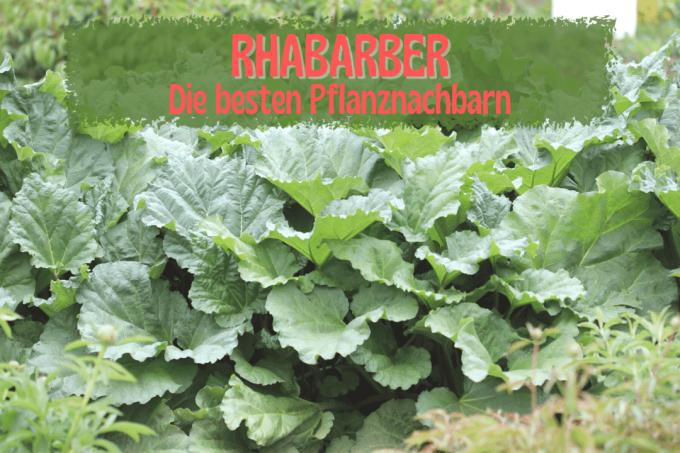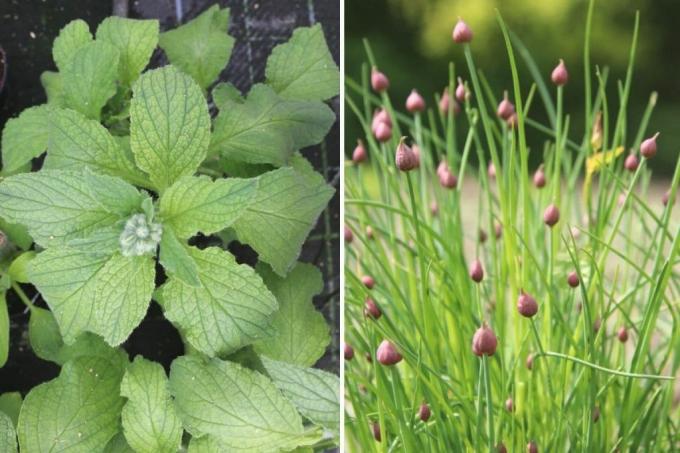
table of contents
- Similar location requirements
- Vegetables as plant neighbors
- Flowers as neighboring plants
- Salads as a neighbor
- Avoid the same plant family
- frequently asked Questions
rhubarb is a perennial plant in which the location is rarely changed. In a permanent location it is still possible to find annual neighboring plants that can support each other. These plants are suitable for mixed culture rhubarb.
In a nutshell
- Herbs with similar location requirements are suitable neighbors
- Low cabbage types or beans are suitable as underplanting in the vegetable patch
- You should avoid tall plants that shade the rhubarb plants
- ideal neighboring plants are salads that do not form firm heads
- do not place plants of the same plant family next to rhubarb plants
Similar location requirements
Rhubarb has the advantage that it can stay in the same location for a long time. Even after dividing the plants, you can plant them again in the same location. To find suitable partners for rhubarb in the Mixed culture you should pay attention to similar location claims.
Rhubarb plants have the following Location requirements:
- sunny
- warm
- sheltered from the wind
- humus and nutrient-rich soil
- permeable soil
- moderately moist to fresh
In the herb bed with perennial plants there are only a few suitable partners who are good neighboring plants, as most plants prefer dry and nutrient-poor soils. However, there are some herbs that feel good in the partial shade under the rhubarb leaves.

Suitable herbs are:
- Wild garlic
- Borage
- Curry herb
- dill
- Garden cress
- chamomile
- coriander
- parsley
- arugula
- chives
Vegetables as plant neighbors
If you have rhubarb plants in the same place for several years Vegetable patch has, which usually offers the plants a good soil, since such beds are often rich in nutrients. As a direct neighbor in the vegetable patch, you should only exclude plants that prefer dry and sandy soils, such as carrots or parsnips.

Suitable vegetables as neighboring plants are:
- cauliflower
- broccoli
- French beans
- Lamb's lettuce
- garlic
- Swiss chard
- Beetroot
- spinach
- Onions
Note: Very tall types of cabbage, such as sprouts or palm kale, are not suitable, as they could make the rhubarb the light and it will then only develop moderately.
Flowers as neighboring plants
The advantage of flowers or flowers is often underestimated. Ornamental plants mixed with vegetables such as rhubarb. Many flowering plants have an intense odor that will keep pests away. In addition, some plants give off essential oils, which can be a limited prophylaxis against various diseases.

Suitable flowers as plant neighbors for the rhubarb:
- Sweet peas
- Nasturtiums
- Phacelia
- Marigold
- Tagetes
- forget Me Not
Salads as a neighbor
Salads are particularly suitable as plant neighbors. In the hot summer months you benefit from the large leaves that can provide shade. Salads do not have a very high nutritional requirement and therefore do not represent any direct competition for the rhubarb plants.

Suitable salads:
- Oak leaf salad
- Lollo rosso
- Pick salad
- Romaine lettuce
- Salad
Note: Salads that form firm heads are also conditionally suitable. However, they should stand in the mixed culture with rhubarb at a sufficient distance so that they are not shaded too much, otherwise they will not develop such beautiful heads.
Avoid the same plant family
Rhubarb plants belong to the knotweed family. In the garden there are fewer plants that belong to the same family, with the exception of a few exotic spices like that Asiatic water peppers, however, you should avoid plants of the same family in close proximity to rhubarb plants too set. If you plant the same species of a plant family next to each other, this can promote disease and pest infestation.

Rhubarb plants are prone to the following problems:
- Aphids
- Mosaic virus
- Voles
Note: If you have general problems with aphids in the garden, avoid planting endangered vegetable species in the mixed culture right next to the rhubarb.
frequently asked Questions
In principle, you do not have to transplant the rhubarb plants. However, it is advisable to keep dividing very large plants to stimulate growth. When you plant the rhubarb again, leave enough space so that you can mix other plants next to it.
Of course, other plants in the neighborhood compete with rhubarb, which prefers nutrient-rich soils. Most of the good neighbors for rhubarb plants are also heavy eaters and accordingly good, the soil must always be enriched with nutrients.
Basically there are no completely unsuitable plants for the rhubarb, as long as they do not come from the same plant family. When choosing a suitable neighbor, you should primarily make sure that it provides shade for the rhubarb plants. Suitable neighbors should therefore be no more than as tall as the rhubarb plant or smaller.
How big the distance has to be depends on the respective neighbor. Small vegetables such as lamb's lettuce or spinach require less space than, for example, different types of cabbage.



